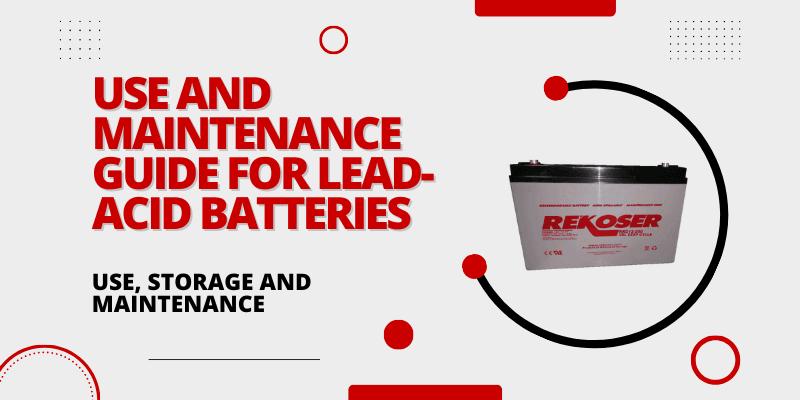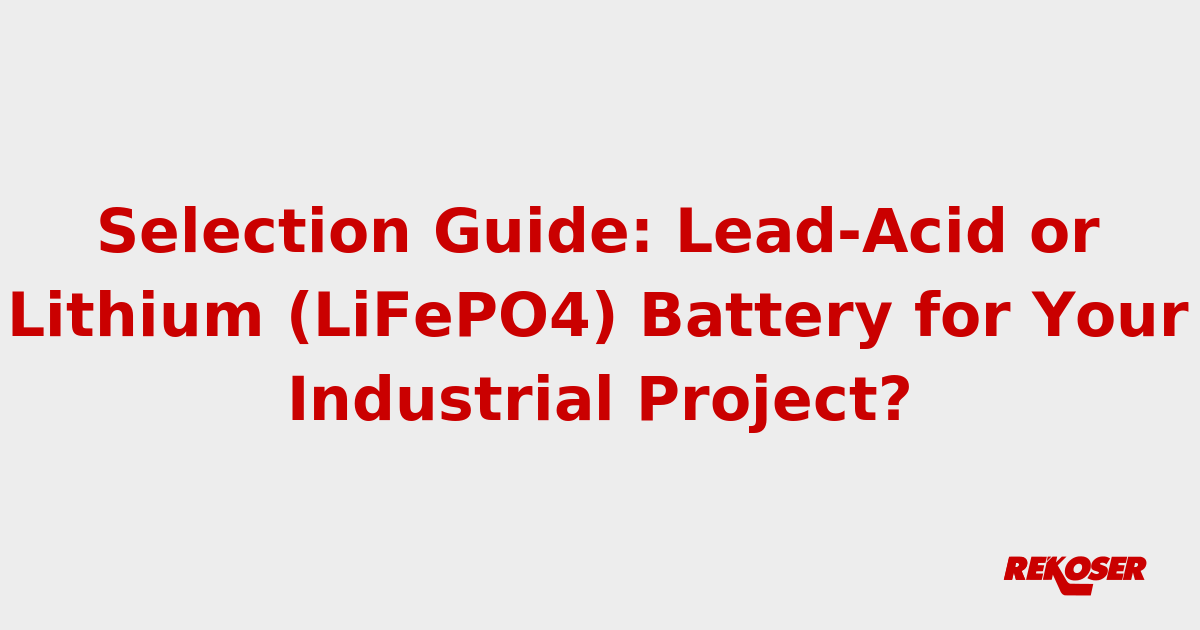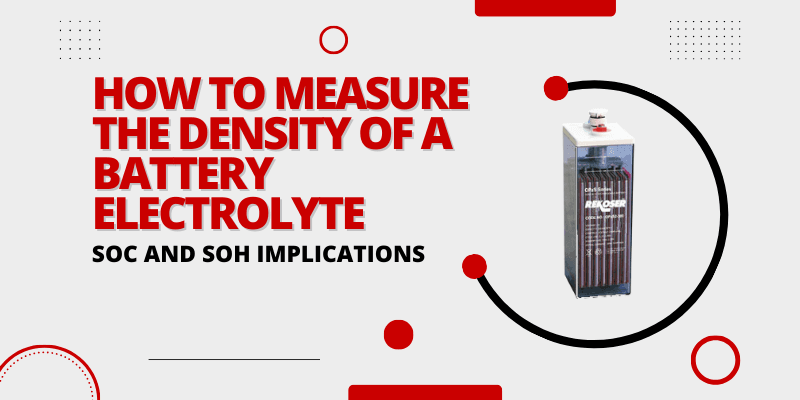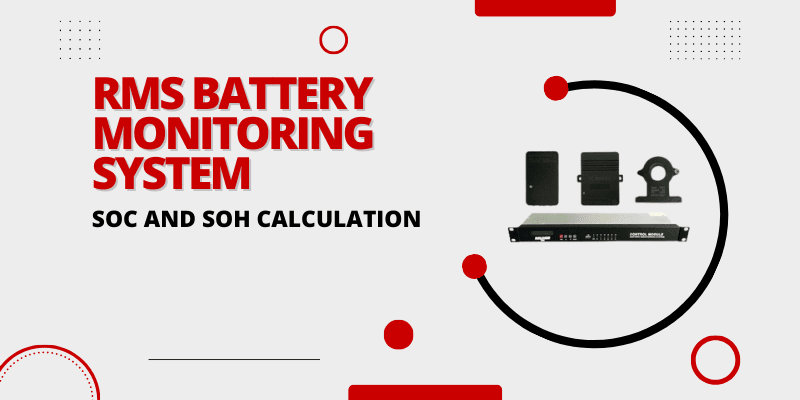
Use and Maintenance Guide for Lead-Acid Batteries
enJun 19, 2024. | By: José González
Lead-acid batteries are essential in numerous sectors, from automotive to industrial. To ensure its longevity and efficiency, it is crucial to follow certain use and maintenance guidelines. In this guide, we will provide you with all the information necessary to optimize the performance of your lead-acid batteries.
Index of contents
- Introduction
- Types of Lead-Acid Batteries
- Conventional Lead-Acid Batteries
- Sealed Lead-Acid Batteries
- Proper Use of Lead-Acid Batteries
- Maintenance of Lead-Acid Batteries
- Regular Inspection
- Cleaning
- Electrolyte Levels
- Correct Load
- Lead-Acid Battery Storage
- Common Problem Solving
- Conclusion
Introduction
Lead-acid batteries are one of the oldest and most widely used energy storage technologies in the world. Their reliability and cost-effectiveness make them ideal for a variety of applications. Since their invention in the 19th century, they have been widely adopted in sectors such as automotive, telecommunications, renewable energy and power backup systems. However, their performance and lifespan largely depend on how they are used and maintained.
These batteries work through the chemical reaction between lead and lead dioxide in the presence of a sulfuric acid electrolyte, generating electricity. This technology, although robust, requires a series of specific care to ensure its optimal functioning and prolong its useful life. Proper maintenance not only prevents premature failure, but also maximizes energy efficiency and reduces long-term costs.
In this guide, we will cover the different types of lead-acid batteries, including conventional and sealed, and provide detailed recommendations on proper use, regular maintenance, storage, and troubleshooting common problems. With this information, you will be able to optimize the performance of your batteries and guarantee their durability, thus contributing to more reliable and efficient operation of your energy systems.
Types of Lead-Acid Batteries
Lead-acid batteries are mainly divided into two categories: conventional and sealed. Each type has its own characteristics, advantages and specific applications.
Conventional Lead-Acid Batteries
These batteries, also known as wet cell batteries, are the most common and have been used for decades. They require regular maintenance, including checking and replenishing electrolyte levels. This type of battery is made up of lead and lead dioxide plates immersed in a sulfuric acid electrolyte. Characteristics
- Maintenance: They require periodic checks of the electrolyte level and refills of distilled water.
- Cost: Generally cheaper than sealed batteries.
- Applications: Common in automotive applications, power backup systems, and some industrial applications.
- Useful Life: Its useful life may vary depending on use and maintenance, but typically lasts between 3 to 5 years.
Advantages
- Low Initial Cost: They are cheaper at the time of purchase.
- Availability: Easily available in the market.
- Discharge Capacity: They can provide high discharge currents.
Disadvantages
- Regular Maintenance: They require constant attention to maintain adequate electrolyte levels.
- Gas Emission: During charging, they may emit gases that require adequate ventilation.
Sealed Lead-Acid Batteries
Also known as VRLA (Valve-Regulated Lead-Acid) batteries, these batteries are sealed and do not require electrolyte level maintenance. They are designed to be maintenance-free and have regulation valves that allow the release of accumulated gases safely. Characteristics
- Maintenance: They do not require additions of water or revisions of the electrolyte.
- Safety: Being sealed, they are safer and do not emit gases during charging.
- Applications: Used in UPS (Uninterruptible Power Supplies), telecommunications, solar energy systems and applications where maintenance-free operation is needed.
- Useful Life: They may have a similar or slightly longer lifespan than conventional batteries, depending on the design and use.
Advantages
- Maintenance Free: They do not need periodic reviews or additions of water.
- Improved Safety: Reduced risk of acid leaks and gas emissions.
- Installation Versatility: They can be installed in various positions and places without the need for special ventilation.
Disadvantages
- Higher Initial Cost: They are more expensive than conventional batteries.
- Temperature Sensitivity: They may be more sensitive to high temperatures which affect their performance and useful life.
- Recycling: Although recyclable, the process can be more complicated due to its sealed design.
By knowing the characteristics and needs of each type of lead-acid battery, you can choose the option that best suits your specific requirements and ensure you follow proper maintenance practices to maximize its performance and durability.
Proper Use of Lead-Acid Batteries
Proper use is essential to maximize the life of lead-acid batteries. Here are some recommendations:
-
Avoid frequent deep discharges: Deep discharges can significantly reduce battery life. A deep discharge is generally defined as a discharge below 50% of the battery’s total capacity. Repeated deep discharges can cause sulfation of the lead plates, which negatively affects the performance and capacity of the battery. Use a monitoring system to ensure that batteries are not discharged beyond their recommended limits.
-
Full charge: Make sure to fully charge the battery after each use. Incomplete charging can lead to a sulfation process, in which lead sulfate crystals form on the battery plates, reducing its capacity and efficiency. Use a charger suitable for the type of lead-acid battery you are using, preferably a smart charger that adjusts the charge rate based on the condition of the battery.
-
Temperature: Keep batteries at a moderate temperature to avoid damage from extreme heat or cold. Extreme temperatures can have an adverse impact on the performance and life of lead-acid batteries. High temperatures can accelerate internal corrosion and increase the self-discharge rate, while low temperatures can reduce the battery’s capacity and its ability to supply current. Ideally, batteries should be kept at an ambient temperature of between 15°C and 25°C.
-
Avoid overcharging: Overcharging can cause heat and gases to build up inside the battery, which can damage the internal plates and reduce its lifespan. Use a charger with a charge controller that stops the charging process once the battery reaches full capacity.
-
Use appropriate batteries for each application: Make sure you use the appropriate battery for the specific application. Batteries designed for vehicle starting are not ideal for deep cycle applications, such as solar or backup systems, as they are designed to provide short bursts of high current and not long discharges.
-
Monitoring and regular maintenance: Implement a monitoring system that allows you to track the state of charge, temperature and general health of the battery. Perform preventive maintenance regularly to detect and correct problems before they significantly affect battery performance.
-
Protection against vibrations and shocks: Constant vibrations and shocks can damage lead-acid batteries, causing internal components to become misaligned or damaged. Be sure to mount batteries on vibration-absorbing mounts, especially in automotive or industrial applications.
By following these recommendations, you will be able to maximize the efficiency and useful life of your lead-acid batteries, ensuring reliable and long-lasting performance in all your applications.
Maintenance of Lead-Acid Batteries
Regular Inspection
Perform regular visual inspections for any signs of damage or wear. Look for cracks, acid leaks, or corrosion on the terminals. Also, check that the cables and connections are firm and free of wear. A detailed inspection helps identify problems before they become major failures.
Cleaning
Keep battery terminals clean and free of corrosion. Use a solution of baking soda and water to clean the terminals and be sure to dry them completely before reconnecting. Corrosion on the terminals can cause additional resistance and reduce battery efficiency. To prevent future corrosion buildup, apply a thin coat of dielectric grease to the terminals after cleaning.
Electrolyte Levels
For conventional batteries, check the electrolyte levels regularly and top up with distilled water if necessary. Do not use tap water as it may contain minerals that damage the battery. The electrolyte level should always be above the internal plates but not too high. Use a hydrometer to measure the specific gravity of the electrolyte, which can indicate the state of charge of the battery and detect possible internal problems.
Correct Load
Charge the batteries using a suitable charger. Avoid overcharging and make sure the battery is fully charged before use. Use a smart charger if possible. Overcharging can cause evaporation of water from the electrolyte, while undercharging can lead to sulfation. A smart charger automatically adjusts the charging rate and prevents these problems, ensuring a complete and safe charge.
Equalization
For conventional lead-acid batteries, perform a periodic equalization charge. This is a controlled overcharging process that mixes the electrolyte and balances the individual battery cells, helping to prevent stratification and sulfation. Consult the manufacturer’s specifications for the proper frequency and procedure for equalization charging.
Ventilation
Ensure good ventilation in the area where the batteries are located, especially during charging. Lead-acid batteries can release hydrogen and oxygen gases, which are flammable. A well-ventilated area reduces the risk of gas buildup and possible explosions.
Storage
If you are not going to use the batteries for a long time, fully charge them before storing them. Store batteries in a cool, dry place and check the charge periodically. Lead-acid batteries discharge over time even when not in use, and prolonged discharge can permanently damage them.
By following these maintenance practices, you can significantly extend the life of your lead-acid batteries and ensure optimal performance in all your applications.
Lead Acid Battery Storage
Store batteries in a cool, dry place. The ideal temperature for storage is between 10°C and 25°C. Extreme temperatures can cause accelerated self-discharge and deterioration of internal materials. Make sure the area is free of moisture to prevent corrosion.
If they will not be used for a long period of time, fully charge them before storing them. Full charging helps prevent sulfation, a condition in which lead sulfate crystals form on the plates, reducing battery capacity.
Periodic revision
Check the load periodically to make sure they are not completely discharged. Lead-acid batteries can lose their charge over time, even when not in use. Check the charge at least once every three months and recharge if the voltage drops below 70% of its full capacity.
Charging and Maintenance Status
Keep track of charging status during storage. Use a maintenance or float charger to keep the battery charged at an optimal level without risk of overcharging. These chargers are designed to provide a continuous low level charge that keeps the battery at its maximum capacity without damaging it.
Safety precautions
- Ventilation: Store batteries in a well-ventilated area to prevent the buildup of flammable gases.
- Separation: Keep batteries separate from flammable materials and other chemicals.
- Physical Protection: Protects batteries from physical impacts and vibrations, which can cause internal damage.
Long Term Storage
For long-term storage, consider disconnecting batteries from any equipment to avoid passive discharge. Place the batteries on a shelf or in an area where they are not in direct contact with the ground to prevent moisture absorption.
Visual inspection
Before using stored batteries again, perform a complete visual inspection for signs of corrosion, cracks, or leaks. Make sure terminals are clean and connections secure.
By following these steps, you can ensure that your lead-acid batteries maintain their capacity and performance even after long periods of storage.
Common Problem Solving
Battery Does Not Hold Charge
- Possible Causes: A battery that does not hold a charge may be a sign of sulfation, internal damage, or a failure in the charging system.
- Solutions: Try slow charging using a smart charger. If the battery does not improve, it may require professional regeneration to desulfate the plates. In serious cases, consult a specialized technician for a complete review and possible replacement.
Terminal Corrosion
- Possible Causes: Corrosion can be caused by leaking acid, poor ventilation or loose connections.
- Solutions: Clean the terminals with a mixture of baking soda and water to neutralize the acid. Use a stiff bristle brush to remove corrosion. After cleaning, rinse with clean water and dry completely. Apply a layer of Vaseline or dielectric grease to prevent future corrosion. Make sure the connections are tight and check regularly.
Low Starting Capacity
- Possible Causes: This may be due to insufficient charge, low ambient temperature or internal deterioration of the battery.
- Solutions: Make sure the battery is fully charged before use. Check electrolyte levels in wet cell batteries and refill with distilled water if necessary. In cold climates, consider using a battery heater to keep the battery at optimal operating temperature. If the problem persists, perform a load test to evaluate the actual capacity of the battery. If the capacity is significantly less than rated, it may be time to replace the battery.
Other Common Problems
Sulfation
- Possible Causes: Frequent deep discharges and insufficient charging.
- Solutions: Perform a desulfation charge using a specific charger for this purpose. If sulfation is severe, the battery may need replacement.
Electrolyte Loss
- Possible Causes: Overheating or overloading.
- Solutions: Check the charging system to make sure it is not overcharging the battery. Refill with distilled water if levels are low and ensure the battery is in a well-ventilated area to prevent overheating.
Swollen Battery
- Possible Causes: Overload or internal failure.
- Solutions: Disconnect and remove the battery immediately. Do not attempt to charge or use a swollen battery. Take the battery to an appropriate recycling center and replace it with a new one.
Maintaining a regular inspection and maintenance regimen can help prevent these problems and ensure optimal performance of lead-acid batteries.
Conclusion
Proper maintenance of lead-acid batteries is essential to ensure their performance and longevity. By following these guidelines, you can maximize the efficiency of your batteries and avoid common problems. Remember to carry out regular inspections and follow the recommendations for use and storage to obtain the best results.
Lead-acid batteries are an important investment in many applications, from automobiles to backup power systems. Implementing a proper maintenance program not only extends the life of your batteries, but also ensures reliable and consistent performance. Additionally, correct storage and proper use are essential to prevent premature failure and ensure that batteries are always ready to go when needed.
It is essential to keep in mind that security must be a priority. Proper handling and maintenance not only extends battery life, but also prevents accidents and safety issues. Always follow the manufacturer’s instructions and use appropriate personal protective equipment when handling lead-acid batteries.
In short, by paying attention to the details of lead-acid battery use, maintenance and storage, you can ensure that you get maximum performance and durability from your batteries, thereby protecting your investment and improving the operational efficiency of your power systems.
Subscribe
Subscribe via RSS.
Recent Posts
-

Selection Guide: Lead-Acid or Lithium (LiFePO4) Battery for Your Industrial Project?
Posted on 20 Jan 2026 -

The Definitive Guide to Racks and Cabinets for Battery Banks
Posted on 30 Dec 2025 -
 Posted on 23 Jan 2025
Posted on 23 Jan 2025
-
 Posted on 10 Dec 2024
Posted on 10 Dec 2024